#saint-louis-des-Invalides cathedral
Text

interior,
Saint-Louis-des-Invalides Catholic Cathedral, Paris, France.
#paris france#architecture#saint-louis-des-Invalides cathedral#inteior#monochromatic#historic#photographers on tumblr#color photography#original photography#history#frank foster
29 notes
·
View notes
Text
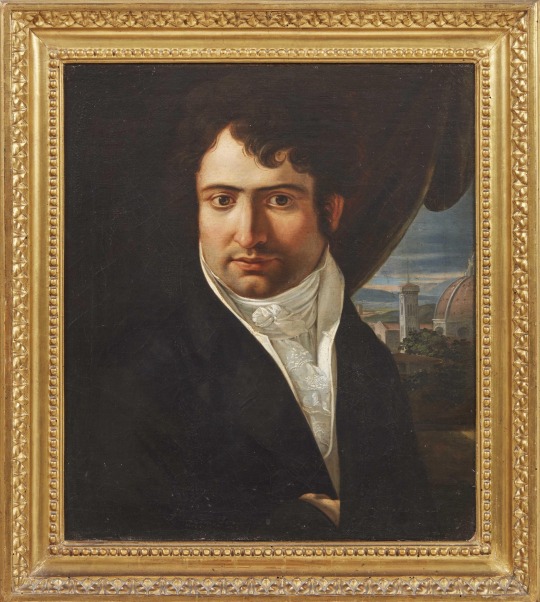
Jérôme all grown up during his Italy years
Portrait of Girolamo Bonaparte, by Pietro Benvenuti
The last of Napoleon’s brothers, born in [1784], Girolamo was a carefree and frivolous young man, often lacking prudence and moderation, who led a life of entertainment. In 1807 he married Catherine, daughter of King Frederick I of Württemberg, and was made king of Westphalia by his brother. After the fall of Napoleon, he left France to reside first in Vienna then in Trieste, Rome and Porto San Giorgio in the Marche. A widower since 1835, in 1840 he secretly married an Italian noblewoman, Giustina Pecori-Suárez (1811–1903), in Florence. Returning to Paris in 1848, he was appointed governor general of the Hôtel des Invalides, then Marshal of France in 1850, president of the Senate in 1851 and was reinstated with the title and honors of Imperial Prince in 1852. He died in 1860; his tomb is located in the cathedral of Saint Louis des Invalides next to Napoleon’s large sarcophagus.
(Source)
#I’m Jerome’s biggest defender#Pietro Benvenuti#Benvenuti#Jerome Bonaparte#Jérôme Bonaparte#Napoleon’s brothers#Napoleon’s family#Girolamo Bonaparte#pandolfini#Palazzo Ramirez-Montalvo#Firenze#Florence#art#Jerome#napoleonic era#napoleonic#first french empire#french empire#painting#portrait#cravat#1800s#19th century#auction#nell’asta Dal Rinascimento al primo ‘900 del 2 febbraio 2021
14 notes
·
View notes
Text
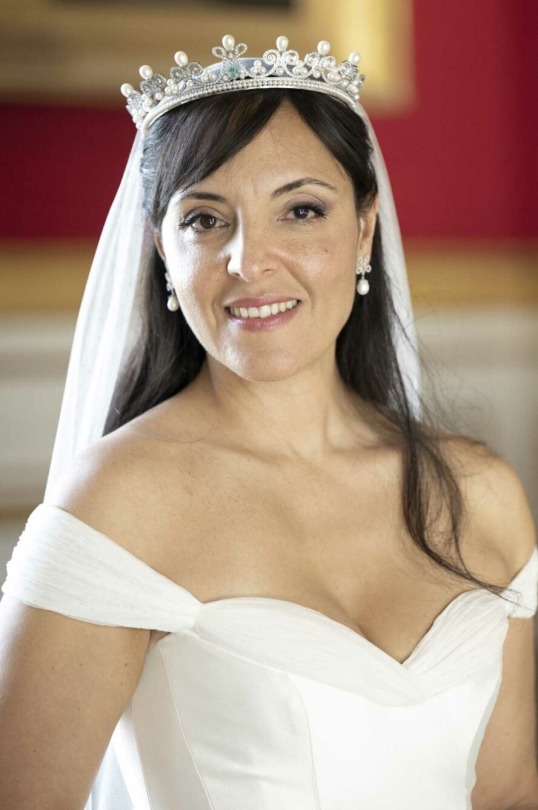
TIARA ALERT: Yasmine Briki wore a pearl, emerald, and diamond tiara for her wedding to Prince Joachim Murat at the Cathedral Saint Louis des Invalides in Paris on 22 October 2022.
#Tiara Alert#Princess Yasmine Murat#Murat#France#French Imperial Family#Julian Pelliccia#pearl#modern tiaras
110 notes
·
View notes
Text
AAAAAAAAAAAAAAAAAAAAAAAAA
I want to adress this concept in a deep way BUT 1) I have literally no time to waste and 2) I don't want to write right now, specially in english. My hsnds are so fucking cold and have been acting numb since the beggining of the day. But whatever. The topic is:
Irrational embellishments of a City.
Look, the group as we know it of the surrealist artists (Andre Breton + Gang) reported multiples experiments surrounding the possibilities of irrational knowledge. What would the mind express when there is no rational or concious effort that could change its outcome? Dreams were a fucking incredible area of studies for the surrealism group because it was the purest expression of irrational knowledge. Other techniques revolving around speed: Giving an answer or writing ideas as fast as you could was an accesible way to obtain information not contaminated by logical or rational thought.
NOW one of those games/experiments was giving answers to questions in that exact way. Sometime around objects, dates, etc. The one that I want to bring back to table is On certain possibilities for the irrational embellishments of a City, where they suggested changes and renovations for the monuments of Paris: The Arch of Triumph, the Justice Palace, the statue of Joan D'Arc, the Eiffel Tower, etc.
(REMIND ME TO ADD REFERENCES ABOUT THE WRITTEN REPORT OF THE GAME/EXPERIMENT)
Instructions: Every participant must answer the question regarding the architecture/urbanist changes to do in a certain monument. The players were Andre Breton, Paul Eluard, Arthur Harfaux, Maurice Henry, Benjamin Peret, Tristan Tzara, George Wenstein.
Doit-on conserver, déplacer, modifier, transformer ou supprimer : – 1. L’arc de Triomphe – 2. L’obélisque – 3. La Tour Eiffel – 4. La Tour Saint-Jacques – 5. La statue de Chappe – 6. La statue de Gambetta – 7. La statue de Jeanne-d’Arc (rue de Rivoli ) – 8. Paris pendant la guerre – 9. La Défense de Paris en 1870 – 10. La République (place de la République) – 11. La colonne Vendôme – 12. Le Sacré-Cœur – 13. Le Trocadéro – 14. Le Chevalier de la Barre – 15. Le Lion de Belfort – 16. L’Opéra – 17. Les Invalides – 18. Le Palais de Justice – 19. La Sainte-Chapelle – 20. Le Chabanais – 21. Notre-Dame – 22. La Nationale – 23. La statue de Panhard – 24. La statue d’Alfred de Musset – 25. La statue de Clémenceau – 26. Le Panthéon – 27. La statue d’Henri IV – 28. La statue de Victor Hugo (Palais-Royal) – 29. La statue de Louis XIV – 30. La gare de l’Est- – 31. La statue de Camille Desmoulins ?
(To concerve, displace, modify, transform or suppress)
THE FUCKING POINT: Is that the City is a maleable piece of shit. The city is the face of a society and a culture. The monuments and the streets can be read like lines in a hand, scars, moles.
The city shapes our undertanding of it, and we are the ones who shape it (usually). NOW, what happens when our monuments and buildings are changed? Think about protests and riots. Buildings in fire or demolished according to the way they represent a philosophy and philosophies are changed.
BUT BUT BUT BUT BUT, what happens when this change is irrational? What happens when the way we change the city is absurd, is nonsensical, is an anomaly?
Paul Éluard suggested "lay it (the Arch of Triumph) on its side and transform it into the most beautiful public urinal in France."
Andre Breton suggested about Notre Dame cathedral: Replacing the towers with “immense oil and vinegar cruet, one bottle filled with blood, the other with sperm" and the cathedral itself into a “school for the sexual education of virgins.”
He also suggested about the Tour Saint-Jacques (below) to demolish the surrounding houses and then prohibiting all access under penalty of death for one hundred years.
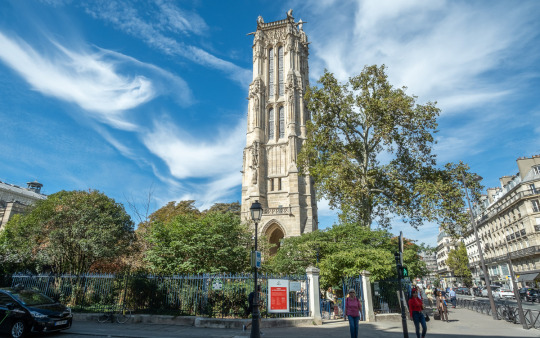
DO YOU THE POINT I'M TRYING GO MAKE HERE???
BUILDINGS ARE NOT INMUTABLE AS THOUGHTS. THEY CAN BE DESTROYED, THEY CAN BE TWISTED. We feel the oppresive and eternal presence of our monuments and towers, buildings, brindges, churches. But they can de changed and bended.
Let's make the Capitol a massive statue of balloons, the Palace Justice in Mexico a communitary pool. Let the Independe Angel statue in Mexico no longer be a roundabout, and allow the cars to go across it i any direction and take down the statue and run over it.
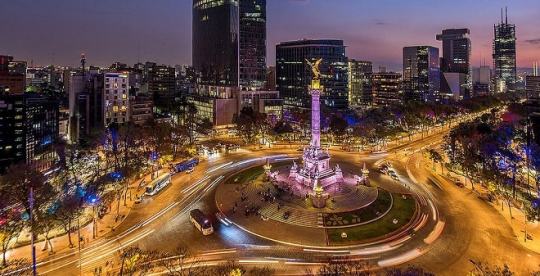
Let Nonsense be the apocaliptic monster that eats politics and religions, and faith and fear and rational blocks of concrete. Let it rot the chains and contaminate the walls, fuck the statues and eat the streets. Let architecture grow legs like moho and eoplod the featyres than never bringa back againts the one that atre chained and nevermore let them die aqnds eat and sleep and fuck ansd never o nevrenma ahwa am iI DON ITR NOR W AN D S;LEEP.
4 notes
·
View notes
Text
Discovering the Magic of Paris: A Guide to Unmissable Attractions
Paris, the City of Light, has captured the hearts of travelers for centuries. With its romantic ambiance, rich history, and world-famous landmarks, it's no wonder that Paris is a dream destination for many. Whether you're a first-time visitor or returning to the French capital for another enchanting experience, this guide will help you navigate the many treasures Paris has to offer. Here's a list of must-visit places that will make your trip to Paris truly unforgettable.
The Eiffel Tower
You can't go to Paris without experiencing the iconic Eiffel Tower. This towering structure, designed by Gustave Eiffel for the 1889 World's Fair, provides panoramic views of the entire city from its observation decks. The sparkling lights of the Eiffel Tower at night are a sight to behold. Consider visiting during the evening for a truly magical experience.

Louvre Museum
The Louvre is not just a museum; it's a treasure trove of art and history. Home to over 35,000 works of art, including the Mona Lisa and the Venus de Milo, it's a must-visit for art enthusiasts. Even the architecture of the Louvre, with its glass pyramid entrance, is a masterpiece in itself.
Notre-Dame Cathedral
Despite the devastating fire in 2019, the Notre-Dame Cathedral remains a symbol of Paris and Gothic architecture. While the interior is under renovation, the exterior, with its intricate facade and flying buttresses, is still a sight to behold. Strolling along the Seine River near Notre-Dame provides beautiful views and a glimpse of its resilience.
Montmartre and Sacré-Cœur Basilica
Montmartre is a charming, artistic neighborhood that embodies the Bohemian spirit of Paris. Explore its narrow streets, watch street artists at work, and visit the Sacré-Cœur Basilica, perched atop a hill. The basilica offers stunning views of the city, and the climb to the top is worth the effort.

Champs-Élysées and the Arc de Triomphe
Take a leisurely stroll down the Champs-Élysées, one of the world's most famous avenues, lined with shops, cafes, and theaters. At the western end stands the Arc de Triomphe, a monument commemorating French victories in the Napoleonic Wars. You can also ascend the arch for more breathtaking views of the city.
Palace of Versailles
A short trip from the heart of Paris, the Palace of Versailles is a grand testament to France's opulent history. Explore the breathtaking Hall of Mirrors, the stunning gardens, and the exquisite palace rooms. The sheer grandeur of this historical site will leave you in awe.
Seine River Cruise
Seeing Paris from the Seine River is a unique and romantic experience. Many operators offer river cruises that provide a different perspective of the city's landmarks. Whether it's a daytime cruise or a romantic evening one with dinner, this is a memorable way to view the city's beauty.
Musée d'Orsay
Housed in a former railway station, the Musée d'Orsay is home to an impressive collection of Impressionist and Post-Impressionist masterpieces. Artists like Monet, Van Gogh, and Degas are showcased here. The building itself is a work of art with its magnificent clock faces and Beaux-Arts architecture.
Palais Garnier
For lovers of the performing arts and opulent architecture, a visit to the Palais Garnier, also known as the Paris Opera House, is a must. Guided tours allow you to explore the ornate interiors, grand staircase, and the opulent auditorium.
Luxembourg Gardens
The Jardin du Luxembourg is a serene oasis in the heart of Paris. You can relax by the fountains, stroll through the meticulously maintained gardens, and even rent a traditional wooden sailboat for the pond. It's a perfect place to unwind and enjoy the Parisian atmosphere.
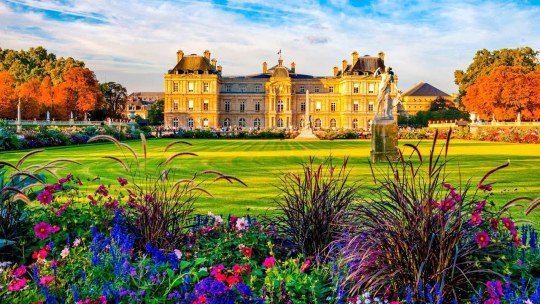
Les Invalides and the Musée de l'Armée
Les Invalides is a complex of buildings that house museums and monuments related to the military history of France. The centerpiece is the golden-domed Chapel of Saint Louis des Invalides, but the Musée de l'Armée offers an extensive collection of military artifacts and history.
The Marais District
The Marais is a trendy and historic district known for its charming streets, vintage boutiques, and art galleries. It's also home to many historic landmarks, including the Place des Vosges, the oldest planned square in Paris, and the Victor Hugo House, where the famous writer lived.
Canal Saint-Martin
For a more off-the-beaten-path experience, explore the Canal Saint-Martin. This picturesque waterway is lined with trees and surrounded by quaint cafes and shops. It's a great place to take a leisurely walk or enjoy a picnic.
Père Lachaise Cemetery
Père Lachaise is not your typical tourist attraction, but it's a fascinating place to visit. It's the final resting place of many famous individuals, including Oscar Wilde, Jim Morrison, and Edith Piaf. The cemetery's winding paths and ornate tombs make it a peaceful and reflective place to explore.
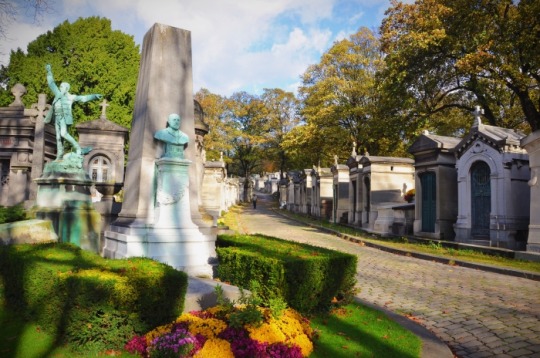
Palais Royal
The Palais Royal is a hidden gem in Paris. This historic palace is surrounded by beautiful gardens and features intriguing art installations like the striped columns by Daniel Buren. It's a serene and art-filled escape from the hustle and bustle of the city.
Food and Cafés
A visit to Paris wouldn't be complete without savoring its culinary delights. Try classic French dishes in local bistros, indulge in delicious pastries from patisseries, and savor a cup of coffee in one of the city's many charming cafes. The food scene in Paris is diverse and delectable.
Shopping on the Left Bank
Paris is a fashion capital, and shopping is a delightful experience. Explore the boutiques and shops on the Left Bank, particularly in the Saint-Germain-des-Prés neighborhood. From high-end fashion to unique boutiques, there's something for every shopper.
In conclusion, Paris is a city that truly has it all, from iconic landmarks to hidden gems, world-class art, and delectable cuisine. Each visit to this enchanting city unveils new layers of its beauty and history. While this guide covers some of the essential stops, don't forget to leave room for serendipitous discoveries. After all, that's part of the magic of Paris. So, pack your bags and get ready to be captivated by the charm of the City of Light. Paris is waiting to welcome you with open arms, and it's an experience you'll treasure forever.
1 note
·
View note
Photo
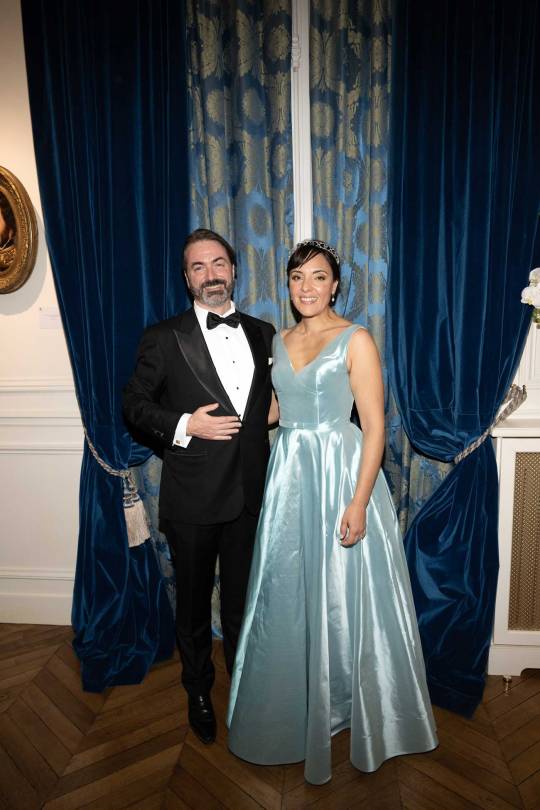
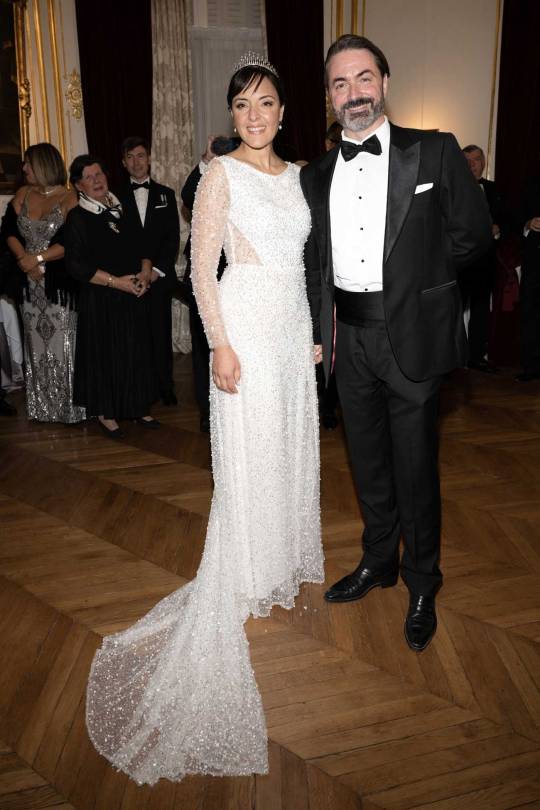

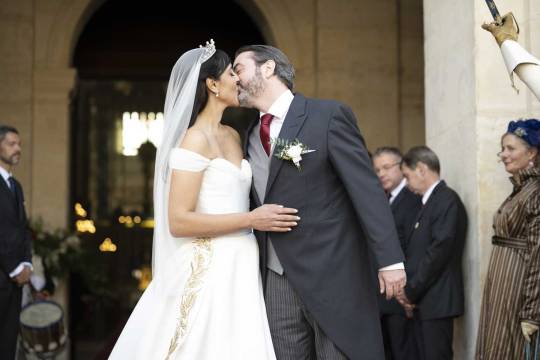
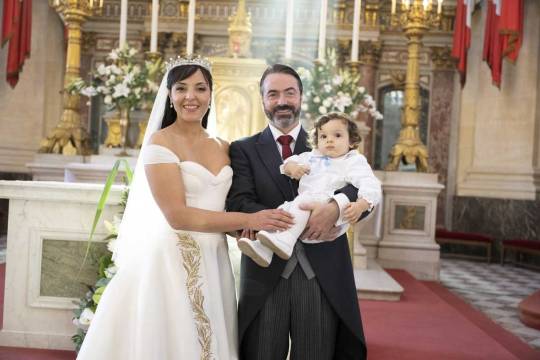
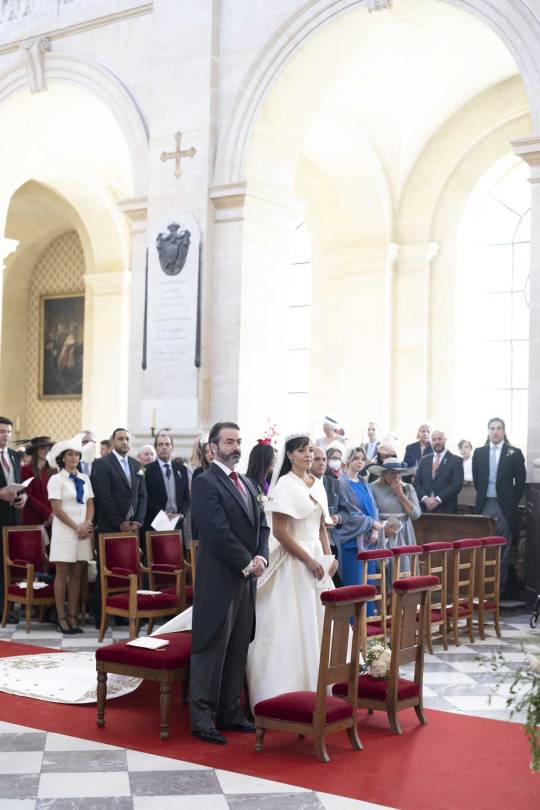

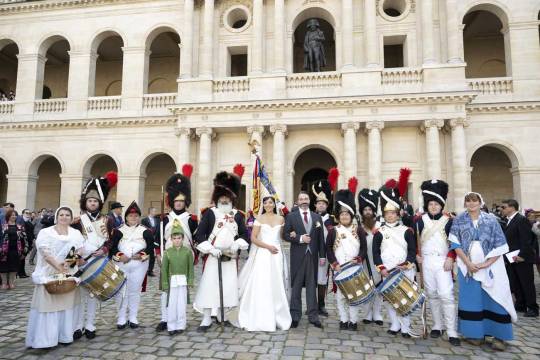


The Wedding of Prince Joachim Murat, Prince of Pontecorvo and Yasmine Lorraine Briki at the Cathedral Saint Louis des Invalides in Paris, following a Civil Ceremony and the birth of their son last year: https://royalwatcherblog.com/2022/10/23/wedding-of-prince-joachim-murat/
0 notes
Photo

This Roman city
This Roman city, mainly on the island, but with annexes, north and south, on the mainland, according to the legend of St. Genevieve, repels the assault of Attila, is captured by Clovis at the end of the fifth century, and is made his capital. During the early monarchy, the island was the city, the home of the kings, the seat of the church, of government, and of justice, crowded with narrow streets and churches, and densely populated.
Gradually as the walls of Paris were extended in a series of circuits from the twelfth to the eighteenth century, the island city was eased of its close population, and at last in our own day was cleared altogether by gigantic sweeps of destruction and reconstruction. It once contained some 50,000 inhabitants, at least fifty or sixty streets, and more than twenty churches. To-day it has few private houses left, except at each end. As we said, the Citi consists of Cathedral, Palais de Justice, and Sainte Chapelle, Conciergerie and Prisons, Prefecture of Police, Chamber of Commerce, a huge hospital, a huge barrack, a flower market — vast places,’ gardens, quays, and Morgue. This is almost all that stands on the Paris of Julian, Clovis, and Hugh Capet.
Roman and Gallo-Roman circuit
It is a task full of historical teaching to trace the successive circuits and the walls of the city as it gradually grew. Each circuit represents an epoch in the history of France. First comes the old Roman and Gallo-Roman circuit — the Citi or island with some fortified post at the head of the North Bridge (PI. du Chatelet) and at the South Bridge (R. St. Jacques) extending on the South mainland as far as the Thermes with villas, theatres, cemeteries, and establishments outside the city circuit. The second circuit is that of Louis the Stout, the great restorer of the monarchy (1130), who built the Grand Chdtelet on the site of the Place du Chatelet, and the Petit Chatelet on the Quai St. Michel (left bank).
The third circuit is that of the great king Philip Augustus (1200), who built the Louvre, completed Notre Dame, and carried the walls North as far as St. Eustache, South as far as the Pantheon private tour istanbul, and included the smaller island, so that the original Citi was now but a sixth of the city. Next comes the fourth circuit, raised by Etienne Marcel in the middle of the fourteenth century, just after Poitiers during the great English War, who is duly commemorated by the fine equestrian statue beside the Hotel du Ville. Marcel laid the foundations of the Bastille, and repaired and strengthened rather than extended the circuit of Philip Augustus; and then the whole work was completed by Charles v. in the second half of the fourteenth century.
The fifth great circuit is that of Richelieu under Louis XIII. who carried the city walls Northwards as far as the existing inner Boulevards, and the R. Richelieu and its quarter is one of its additions; and Southwards it inclosed the whole district of the Luxembourg and its gardens to the Jardin des Plantes. The sixth great change came in the reign of Louis xiv. who conceiving himself invincible in France, if not in Europe, found fortifications in Paris needless and barbarous. Accordingly in his reign the old walls of Henry iv. and Richelieu were razed, and the Boulevards that we know were constructed as spacious avenues. On the site of the ancient Tour de Nesle, the Institute and the College Mazarin were built; the Louvre was completed and transformed into an Italian palace; the Tuileries were continued until they joined the Louvre; the Invalides and other great works were continued, and finally Paris received its character of an open modern city of Palladian architecture.
0 notes
Photo

Marseilles and Rouen
It has thus increased exactly three and one half times. There is nothing abnormal in this. London in the same time has grown quite fourfold, and a similar rate of increase has been seen in Berlin, Vienna, St. Petersburg, Lyons, Marseilles, and Rouen.
The increase of many English centres of industry, and of nearly all the American, has been vastly greater and more rapid. Still, the increase of Paris, within a hundred years, of three or four times in population and five or six times in area, is a sufficiently striking fact. In 1789 there were about one thousand streets: there are now about four thousand. There were fifteen boulevards: there are now more than one hundred. The Invalidcs, the Luxembourg, the Bas-tille, the line of the inner boulevards, and the Place Venddme then marked the utmost limits of regular habitations; and thence the open country began. There were within the barriers immense spaces, gardens, and parks; but they were closed to the public. Paris which is now covered with gardens, parks, plantations, and open spaces was in 1789 singularly bare of any.
The Jardin des Plantes, the Jar din des Tuileries, were royal possessions; the Champs Elystes and the Palais Royal were favourite walks. But these were almost the only accessible promenades. Of some forty places of importance which Paris now possesses, few existed in 1789, except the Place de la Concorde, the Esplanade of the Invalides, the Cha77ip de Mars, the Place Ve7ido77ie, and the Place Royale (now des Vosges) private turkey tours. Within the circuit of the older city there was hardly a clear space, a plantation, a parterre, or a free walk, except in the Pa7′- vis de Notre Da7tie, the March des l7moce7its, and the Place de la G7’bve. From the Loire 7’c to the Hotel de Ville there lay a labyrinth of dark and tortuous lanes, such as we may still see in the Ghetto of Rome or round about the Canongate at Edinburgh.
Revolution came, the Convention
The change that has taken place is that of a dream, or a transformation in a theatre. The Revolution came, the Convention, the first Empire, the Orleans monarchy, and the third Empire — and all is new. Streets only too symmetrical, straight, and long; open spaces at the junction of all the principal streets, boulevards, avenues, gardens, fountains, have sprung by magic into the places so lately covered with labyrinthine alleys.
As we stand today in the Place dn Carrousel, in the Place de Voptra, du Theatre Franqais, du Chatelet, de la Bastille, des Innocents, St. Michel, St. Germain, Notre Dame, or de I’Hdtel de Ville, each radiant with imposing buildings, stately avenues, monuments, fountains, columns, and colonnades, with everything that modern architecture can devise of spacious, airy, and gay, it is hard indeed to understand how in so few years (and much of it within the memory of men still living) all this has been created over the ruins of the dense, dark, intricate streets of the last century, where lanes still followed the ramparts of Louis the Stout and Philip Augustus, where the remnants existed of chateaux built by mediaeval seigneurs, or during the civil wars of the fifteenth and sixteenth centuries.
The clearance has been most cruel of all ill the old City, the original Paris of the earliest ages. Down to the Revolution it had a population of about 20,000, which has now almost wholly disappeared, along with the sixteen churches, the oratories, and streets. The ancient island — Lutetia — is now occupied almost solely by six enormous public buildings; and the spot, which for eighteen centuries has been busy with the hum of a city life of intense activity and movement, is now covered only by a lonely but glorious cathedral, an enormous hospital, a huge barrack, courts, offices, and official buildings. The oldest bit of Paris, the oldest bit of city in all Northern Europe, now looks for the most part like a new quarter laid out on some vacant space. Notre Dame, the Sainte Chapelle, the Conciergerie, have been restored and furbished up till they almost might pass for modern buildings. The barrack, the hospital, the geometric streets, the open square, might do credit to Chicago.
0 notes
Photo

Marseilles and Rouen
It has thus increased exactly three and one half times. There is nothing abnormal in this. London in the same time has grown quite fourfold, and a similar rate of increase has been seen in Berlin, Vienna, St. Petersburg, Lyons, Marseilles, and Rouen.
The increase of many English centres of industry, and of nearly all the American, has been vastly greater and more rapid. Still, the increase of Paris, within a hundred years, of three or four times in population and five or six times in area, is a sufficiently striking fact. In 1789 there were about one thousand streets: there are now about four thousand. There were fifteen boulevards: there are now more than one hundred. The Invalidcs, the Luxembourg, the Bas-tille, the line of the inner boulevards, and the Place Venddme then marked the utmost limits of regular habitations; and thence the open country began. There were within the barriers immense spaces, gardens, and parks; but they were closed to the public. Paris which is now covered with gardens, parks, plantations, and open spaces was in 1789 singularly bare of any.
The Jardin des Plantes, the Jar din des Tuileries, were royal possessions; the Champs Elystes and the Palais Royal were favourite walks. But these were almost the only accessible promenades. Of some forty places of importance which Paris now possesses, few existed in 1789, except the Place de la Concorde, the Esplanade of the Invalides, the Cha77ip de Mars, the Place Ve7ido77ie, and the Place Royale (now des Vosges) private turkey tours. Within the circuit of the older city there was hardly a clear space, a plantation, a parterre, or a free walk, except in the Pa7′- vis de Notre Da7tie, the March des l7moce7its, and the Place de la G7’bve. From the Loire 7’c to the Hotel de Ville there lay a labyrinth of dark and tortuous lanes, such as we may still see in the Ghetto of Rome or round about the Canongate at Edinburgh.
Revolution came, the Convention
The change that has taken place is that of a dream, or a transformation in a theatre. The Revolution came, the Convention, the first Empire, the Orleans monarchy, and the third Empire — and all is new. Streets only too symmetrical, straight, and long; open spaces at the junction of all the principal streets, boulevards, avenues, gardens, fountains, have sprung by magic into the places so lately covered with labyrinthine alleys.
As we stand today in the Place dn Carrousel, in the Place de Voptra, du Theatre Franqais, du Chatelet, de la Bastille, des Innocents, St. Michel, St. Germain, Notre Dame, or de I’Hdtel de Ville, each radiant with imposing buildings, stately avenues, monuments, fountains, columns, and colonnades, with everything that modern architecture can devise of spacious, airy, and gay, it is hard indeed to understand how in so few years (and much of it within the memory of men still living) all this has been created over the ruins of the dense, dark, intricate streets of the last century, where lanes still followed the ramparts of Louis the Stout and Philip Augustus, where the remnants existed of chateaux built by mediaeval seigneurs, or during the civil wars of the fifteenth and sixteenth centuries.
The clearance has been most cruel of all ill the old City, the original Paris of the earliest ages. Down to the Revolution it had a population of about 20,000, which has now almost wholly disappeared, along with the sixteen churches, the oratories, and streets. The ancient island — Lutetia — is now occupied almost solely by six enormous public buildings; and the spot, which for eighteen centuries has been busy with the hum of a city life of intense activity and movement, is now covered only by a lonely but glorious cathedral, an enormous hospital, a huge barrack, courts, offices, and official buildings. The oldest bit of Paris, the oldest bit of city in all Northern Europe, now looks for the most part like a new quarter laid out on some vacant space. Notre Dame, the Sainte Chapelle, the Conciergerie, have been restored and furbished up till they almost might pass for modern buildings. The barrack, the hospital, the geometric streets, the open square, might do credit to Chicago.
0 notes
Photo

This Roman city
This Roman city, mainly on the island, but with annexes, north and south, on the mainland, according to the legend of St. Genevieve, repels the assault of Attila, is captured by Clovis at the end of the fifth century, and is made his capital. During the early monarchy, the island was the city, the home of the kings, the seat of the church, of government, and of justice, crowded with narrow streets and churches, and densely populated.
Gradually as the walls of Paris were extended in a series of circuits from the twelfth to the eighteenth century, the island city was eased of its close population, and at last in our own day was cleared altogether by gigantic sweeps of destruction and reconstruction. It once contained some 50,000 inhabitants, at least fifty or sixty streets, and more than twenty churches. To-day it has few private houses left, except at each end. As we said, the Citi consists of Cathedral, Palais de Justice, and Sainte Chapelle, Conciergerie and Prisons, Prefecture of Police, Chamber of Commerce, a huge hospital, a huge barrack, a flower market — vast places,’ gardens, quays, and Morgue. This is almost all that stands on the Paris of Julian, Clovis, and Hugh Capet.
Roman and Gallo-Roman circuit
It is a task full of historical teaching to trace the successive circuits and the walls of the city as it gradually grew. Each circuit represents an epoch in the history of France. First comes the old Roman and Gallo-Roman circuit — the Citi or island with some fortified post at the head of the North Bridge (PI. du Chatelet) and at the South Bridge (R. St. Jacques) extending on the South mainland as far as the Thermes with villas, theatres, cemeteries, and establishments outside the city circuit. The second circuit is that of Louis the Stout, the great restorer of the monarchy (1130), who built the Grand Chdtelet on the site of the Place du Chatelet, and the Petit Chatelet on the Quai St. Michel (left bank).
The third circuit is that of the great king Philip Augustus (1200), who built the Louvre, completed Notre Dame, and carried the walls North as far as St. Eustache, South as far as the Pantheon private tour istanbul, and included the smaller island, so that the original Citi was now but a sixth of the city. Next comes the fourth circuit, raised by Etienne Marcel in the middle of the fourteenth century, just after Poitiers during the great English War, who is duly commemorated by the fine equestrian statue beside the Hotel du Ville. Marcel laid the foundations of the Bastille, and repaired and strengthened rather than extended the circuit of Philip Augustus; and then the whole work was completed by Charles v. in the second half of the fourteenth century.
The fifth great circuit is that of Richelieu under Louis XIII. who carried the city walls Northwards as far as the existing inner Boulevards, and the R. Richelieu and its quarter is one of its additions; and Southwards it inclosed the whole district of the Luxembourg and its gardens to the Jardin des Plantes. The sixth great change came in the reign of Louis xiv. who conceiving himself invincible in France, if not in Europe, found fortifications in Paris needless and barbarous. Accordingly in his reign the old walls of Henry iv. and Richelieu were razed, and the Boulevards that we know were constructed as spacious avenues. On the site of the ancient Tour de Nesle, the Institute and the College Mazarin were built; the Louvre was completed and transformed into an Italian palace; the Tuileries were continued until they joined the Louvre; the Invalides and other great works were continued, and finally Paris received its character of an open modern city of Palladian architecture.
0 notes
Photo
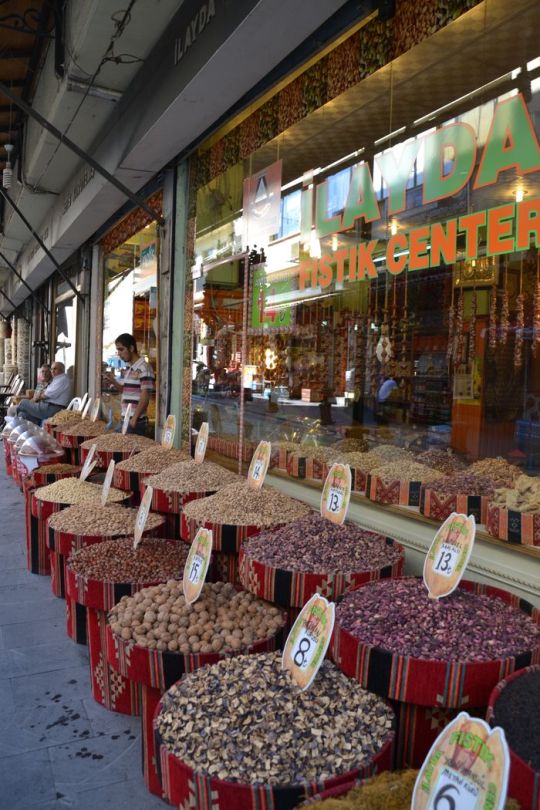
Marseilles and Rouen
It has thus increased exactly three and one half times. There is nothing abnormal in this. London in the same time has grown quite fourfold, and a similar rate of increase has been seen in Berlin, Vienna, St. Petersburg, Lyons, Marseilles, and Rouen.
The increase of many English centres of industry, and of nearly all the American, has been vastly greater and more rapid. Still, the increase of Paris, within a hundred years, of three or four times in population and five or six times in area, is a sufficiently striking fact. In 1789 there were about one thousand streets: there are now about four thousand. There were fifteen boulevards: there are now more than one hundred. The Invalidcs, the Luxembourg, the Bas-tille, the line of the inner boulevards, and the Place Venddme then marked the utmost limits of regular habitations; and thence the open country began. There were within the barriers immense spaces, gardens, and parks; but they were closed to the public. Paris which is now covered with gardens, parks, plantations, and open spaces was in 1789 singularly bare of any.
The Jardin des Plantes, the Jar din des Tuileries, were royal possessions; the Champs Elystes and the Palais Royal were favourite walks. But these were almost the only accessible promenades. Of some forty places of importance which Paris now possesses, few existed in 1789, except the Place de la Concorde, the Esplanade of the Invalides, the Cha77ip de Mars, the Place Ve7ido77ie, and the Place Royale (now des Vosges) private turkey tours. Within the circuit of the older city there was hardly a clear space, a plantation, a parterre, or a free walk, except in the Pa7′- vis de Notre Da7tie, the March des l7moce7its, and the Place de la G7’bve. From the Loire 7’c to the Hotel de Ville there lay a labyrinth of dark and tortuous lanes, such as we may still see in the Ghetto of Rome or round about the Canongate at Edinburgh.
Revolution came, the Convention
The change that has taken place is that of a dream, or a transformation in a theatre. The Revolution came, the Convention, the first Empire, the Orleans monarchy, and the third Empire — and all is new. Streets only too symmetrical, straight, and long; open spaces at the junction of all the principal streets, boulevards, avenues, gardens, fountains, have sprung by magic into the places so lately covered with labyrinthine alleys.
As we stand today in the Place dn Carrousel, in the Place de Voptra, du Theatre Franqais, du Chatelet, de la Bastille, des Innocents, St. Michel, St. Germain, Notre Dame, or de I’Hdtel de Ville, each radiant with imposing buildings, stately avenues, monuments, fountains, columns, and colonnades, with everything that modern architecture can devise of spacious, airy, and gay, it is hard indeed to understand how in so few years (and much of it within the memory of men still living) all this has been created over the ruins of the dense, dark, intricate streets of the last century, where lanes still followed the ramparts of Louis the Stout and Philip Augustus, where the remnants existed of chateaux built by mediaeval seigneurs, or during the civil wars of the fifteenth and sixteenth centuries.
The clearance has been most cruel of all ill the old City, the original Paris of the earliest ages. Down to the Revolution it had a population of about 20,000, which has now almost wholly disappeared, along with the sixteen churches, the oratories, and streets. The ancient island — Lutetia — is now occupied almost solely by six enormous public buildings; and the spot, which for eighteen centuries has been busy with the hum of a city life of intense activity and movement, is now covered only by a lonely but glorious cathedral, an enormous hospital, a huge barrack, courts, offices, and official buildings. The oldest bit of Paris, the oldest bit of city in all Northern Europe, now looks for the most part like a new quarter laid out on some vacant space. Notre Dame, the Sainte Chapelle, the Conciergerie, have been restored and furbished up till they almost might pass for modern buildings. The barrack, the hospital, the geometric streets, the open square, might do credit to Chicago.
0 notes
Photo

This Roman city
This Roman city, mainly on the island, but with annexes, north and south, on the mainland, according to the legend of St. Genevieve, repels the assault of Attila, is captured by Clovis at the end of the fifth century, and is made his capital. During the early monarchy, the island was the city, the home of the kings, the seat of the church, of government, and of justice, crowded with narrow streets and churches, and densely populated.
Gradually as the walls of Paris were extended in a series of circuits from the twelfth to the eighteenth century, the island city was eased of its close population, and at last in our own day was cleared altogether by gigantic sweeps of destruction and reconstruction. It once contained some 50,000 inhabitants, at least fifty or sixty streets, and more than twenty churches. To-day it has few private houses left, except at each end. As we said, the Citi consists of Cathedral, Palais de Justice, and Sainte Chapelle, Conciergerie and Prisons, Prefecture of Police, Chamber of Commerce, a huge hospital, a huge barrack, a flower market — vast places,’ gardens, quays, and Morgue. This is almost all that stands on the Paris of Julian, Clovis, and Hugh Capet.
Roman and Gallo-Roman circuit
It is a task full of historical teaching to trace the successive circuits and the walls of the city as it gradually grew. Each circuit represents an epoch in the history of France. First comes the old Roman and Gallo-Roman circuit — the Citi or island with some fortified post at the head of the North Bridge (PI. du Chatelet) and at the South Bridge (R. St. Jacques) extending on the South mainland as far as the Thermes with villas, theatres, cemeteries, and establishments outside the city circuit. The second circuit is that of Louis the Stout, the great restorer of the monarchy (1130), who built the Grand Chdtelet on the site of the Place du Chatelet, and the Petit Chatelet on the Quai St. Michel (left bank).
The third circuit is that of the great king Philip Augustus (1200), who built the Louvre, completed Notre Dame, and carried the walls North as far as St. Eustache, South as far as the Pantheon private tour istanbul, and included the smaller island, so that the original Citi was now but a sixth of the city. Next comes the fourth circuit, raised by Etienne Marcel in the middle of the fourteenth century, just after Poitiers during the great English War, who is duly commemorated by the fine equestrian statue beside the Hotel du Ville. Marcel laid the foundations of the Bastille, and repaired and strengthened rather than extended the circuit of Philip Augustus; and then the whole work was completed by Charles v. in the second half of the fourteenth century.
The fifth great circuit is that of Richelieu under Louis XIII. who carried the city walls Northwards as far as the existing inner Boulevards, and the R. Richelieu and its quarter is one of its additions; and Southwards it inclosed the whole district of the Luxembourg and its gardens to the Jardin des Plantes. The sixth great change came in the reign of Louis xiv. who conceiving himself invincible in France, if not in Europe, found fortifications in Paris needless and barbarous. Accordingly in his reign the old walls of Henry iv. and Richelieu were razed, and the Boulevards that we know were constructed as spacious avenues. On the site of the ancient Tour de Nesle, the Institute and the College Mazarin were built; the Louvre was completed and transformed into an Italian palace; the Tuileries were continued until they joined the Louvre; the Invalides and other great works were continued, and finally Paris received its character of an open modern city of Palladian architecture.
0 notes
Photo

Marseilles and Rouen
It has thus increased exactly three and one half times. There is nothing abnormal in this. London in the same time has grown quite fourfold, and a similar rate of increase has been seen in Berlin, Vienna, St. Petersburg, Lyons, Marseilles, and Rouen.
The increase of many English centres of industry, and of nearly all the American, has been vastly greater and more rapid. Still, the increase of Paris, within a hundred years, of three or four times in population and five or six times in area, is a sufficiently striking fact. In 1789 there were about one thousand streets: there are now about four thousand. There were fifteen boulevards: there are now more than one hundred. The Invalidcs, the Luxembourg, the Bas-tille, the line of the inner boulevards, and the Place Venddme then marked the utmost limits of regular habitations; and thence the open country began. There were within the barriers immense spaces, gardens, and parks; but they were closed to the public. Paris which is now covered with gardens, parks, plantations, and open spaces was in 1789 singularly bare of any.
The Jardin des Plantes, the Jar din des Tuileries, were royal possessions; the Champs Elystes and the Palais Royal were favourite walks. But these were almost the only accessible promenades. Of some forty places of importance which Paris now possesses, few existed in 1789, except the Place de la Concorde, the Esplanade of the Invalides, the Cha77ip de Mars, the Place Ve7ido77ie, and the Place Royale (now des Vosges) private turkey tours. Within the circuit of the older city there was hardly a clear space, a plantation, a parterre, or a free walk, except in the Pa7′- vis de Notre Da7tie, the March des l7moce7its, and the Place de la G7’bve. From the Loire 7’c to the Hotel de Ville there lay a labyrinth of dark and tortuous lanes, such as we may still see in the Ghetto of Rome or round about the Canongate at Edinburgh.
Revolution came, the Convention
The change that has taken place is that of a dream, or a transformation in a theatre. The Revolution came, the Convention, the first Empire, the Orleans monarchy, and the third Empire — and all is new. Streets only too symmetrical, straight, and long; open spaces at the junction of all the principal streets, boulevards, avenues, gardens, fountains, have sprung by magic into the places so lately covered with labyrinthine alleys.
As we stand today in the Place dn Carrousel, in the Place de Voptra, du Theatre Franqais, du Chatelet, de la Bastille, des Innocents, St. Michel, St. Germain, Notre Dame, or de I’Hdtel de Ville, each radiant with imposing buildings, stately avenues, monuments, fountains, columns, and colonnades, with everything that modern architecture can devise of spacious, airy, and gay, it is hard indeed to understand how in so few years (and much of it within the memory of men still living) all this has been created over the ruins of the dense, dark, intricate streets of the last century, where lanes still followed the ramparts of Louis the Stout and Philip Augustus, where the remnants existed of chateaux built by mediaeval seigneurs, or during the civil wars of the fifteenth and sixteenth centuries.
The clearance has been most cruel of all ill the old City, the original Paris of the earliest ages. Down to the Revolution it had a population of about 20,000, which has now almost wholly disappeared, along with the sixteen churches, the oratories, and streets. The ancient island — Lutetia — is now occupied almost solely by six enormous public buildings; and the spot, which for eighteen centuries has been busy with the hum of a city life of intense activity and movement, is now covered only by a lonely but glorious cathedral, an enormous hospital, a huge barrack, courts, offices, and official buildings. The oldest bit of Paris, the oldest bit of city in all Northern Europe, now looks for the most part like a new quarter laid out on some vacant space. Notre Dame, the Sainte Chapelle, the Conciergerie, have been restored and furbished up till they almost might pass for modern buildings. The barrack, the hospital, the geometric streets, the open square, might do credit to Chicago.
0 notes
Photo

Marseilles and Rouen
It has thus increased exactly three and one half times. There is nothing abnormal in this. London in the same time has grown quite fourfold, and a similar rate of increase has been seen in Berlin, Vienna, St. Petersburg, Lyons, Marseilles, and Rouen.
The increase of many English centres of industry, and of nearly all the American, has been vastly greater and more rapid. Still, the increase of Paris, within a hundred years, of three or four times in population and five or six times in area, is a sufficiently striking fact. In 1789 there were about one thousand streets: there are now about four thousand. There were fifteen boulevards: there are now more than one hundred. The Invalidcs, the Luxembourg, the Bas-tille, the line of the inner boulevards, and the Place Venddme then marked the utmost limits of regular habitations; and thence the open country began. There were within the barriers immense spaces, gardens, and parks; but they were closed to the public. Paris which is now covered with gardens, parks, plantations, and open spaces was in 1789 singularly bare of any.
The Jardin des Plantes, the Jar din des Tuileries, were royal possessions; the Champs Elystes and the Palais Royal were favourite walks. But these were almost the only accessible promenades. Of some forty places of importance which Paris now possesses, few existed in 1789, except the Place de la Concorde, the Esplanade of the Invalides, the Cha77ip de Mars, the Place Ve7ido77ie, and the Place Royale (now des Vosges) private turkey tours. Within the circuit of the older city there was hardly a clear space, a plantation, a parterre, or a free walk, except in the Pa7′- vis de Notre Da7tie, the March des l7moce7its, and the Place de la G7’bve. From the Loire 7’c to the Hotel de Ville there lay a labyrinth of dark and tortuous lanes, such as we may still see in the Ghetto of Rome or round about the Canongate at Edinburgh.
Revolution came, the Convention
The change that has taken place is that of a dream, or a transformation in a theatre. The Revolution came, the Convention, the first Empire, the Orleans monarchy, and the third Empire — and all is new. Streets only too symmetrical, straight, and long; open spaces at the junction of all the principal streets, boulevards, avenues, gardens, fountains, have sprung by magic into the places so lately covered with labyrinthine alleys.
As we stand today in the Place dn Carrousel, in the Place de Voptra, du Theatre Franqais, du Chatelet, de la Bastille, des Innocents, St. Michel, St. Germain, Notre Dame, or de I’Hdtel de Ville, each radiant with imposing buildings, stately avenues, monuments, fountains, columns, and colonnades, with everything that modern architecture can devise of spacious, airy, and gay, it is hard indeed to understand how in so few years (and much of it within the memory of men still living) all this has been created over the ruins of the dense, dark, intricate streets of the last century, where lanes still followed the ramparts of Louis the Stout and Philip Augustus, where the remnants existed of chateaux built by mediaeval seigneurs, or during the civil wars of the fifteenth and sixteenth centuries.
The clearance has been most cruel of all ill the old City, the original Paris of the earliest ages. Down to the Revolution it had a population of about 20,000, which has now almost wholly disappeared, along with the sixteen churches, the oratories, and streets. The ancient island — Lutetia — is now occupied almost solely by six enormous public buildings; and the spot, which for eighteen centuries has been busy with the hum of a city life of intense activity and movement, is now covered only by a lonely but glorious cathedral, an enormous hospital, a huge barrack, courts, offices, and official buildings. The oldest bit of Paris, the oldest bit of city in all Northern Europe, now looks for the most part like a new quarter laid out on some vacant space. Notre Dame, the Sainte Chapelle, the Conciergerie, have been restored and furbished up till they almost might pass for modern buildings. The barrack, the hospital, the geometric streets, the open square, might do credit to Chicago.
0 notes
Photo

This Roman city
This Roman city, mainly on the island, but with annexes, north and south, on the mainland, according to the legend of St. Genevieve, repels the assault of Attila, is captured by Clovis at the end of the fifth century, and is made his capital. During the early monarchy, the island was the city, the home of the kings, the seat of the church, of government, and of justice, crowded with narrow streets and churches, and densely populated.
Gradually as the walls of Paris were extended in a series of circuits from the twelfth to the eighteenth century, the island city was eased of its close population, and at last in our own day was cleared altogether by gigantic sweeps of destruction and reconstruction. It once contained some 50,000 inhabitants, at least fifty or sixty streets, and more than twenty churches. To-day it has few private houses left, except at each end. As we said, the Citi consists of Cathedral, Palais de Justice, and Sainte Chapelle, Conciergerie and Prisons, Prefecture of Police, Chamber of Commerce, a huge hospital, a huge barrack, a flower market — vast places,’ gardens, quays, and Morgue. This is almost all that stands on the Paris of Julian, Clovis, and Hugh Capet.
Roman and Gallo-Roman circuit
It is a task full of historical teaching to trace the successive circuits and the walls of the city as it gradually grew. Each circuit represents an epoch in the history of France. First comes the old Roman and Gallo-Roman circuit — the Citi or island with some fortified post at the head of the North Bridge (PI. du Chatelet) and at the South Bridge (R. St. Jacques) extending on the South mainland as far as the Thermes with villas, theatres, cemeteries, and establishments outside the city circuit. The second circuit is that of Louis the Stout, the great restorer of the monarchy (1130), who built the Grand Chdtelet on the site of the Place du Chatelet, and the Petit Chatelet on the Quai St. Michel (left bank).
The third circuit is that of the great king Philip Augustus (1200), who built the Louvre, completed Notre Dame, and carried the walls North as far as St. Eustache, South as far as the Pantheon private tour istanbul, and included the smaller island, so that the original Citi was now but a sixth of the city. Next comes the fourth circuit, raised by Etienne Marcel in the middle of the fourteenth century, just after Poitiers during the great English War, who is duly commemorated by the fine equestrian statue beside the Hotel du Ville. Marcel laid the foundations of the Bastille, and repaired and strengthened rather than extended the circuit of Philip Augustus; and then the whole work was completed by Charles v. in the second half of the fourteenth century.
The fifth great circuit is that of Richelieu under Louis XIII. who carried the city walls Northwards as far as the existing inner Boulevards, and the R. Richelieu and its quarter is one of its additions; and Southwards it inclosed the whole district of the Luxembourg and its gardens to the Jardin des Plantes. The sixth great change came in the reign of Louis xiv. who conceiving himself invincible in France, if not in Europe, found fortifications in Paris needless and barbarous. Accordingly in his reign the old walls of Henry iv. and Richelieu were razed, and the Boulevards that we know were constructed as spacious avenues. On the site of the ancient Tour de Nesle, the Institute and the College Mazarin were built; the Louvre was completed and transformed into an Italian palace; the Tuileries were continued until they joined the Louvre; the Invalides and other great works were continued, and finally Paris received its character of an open modern city of Palladian architecture.
0 notes
Photo
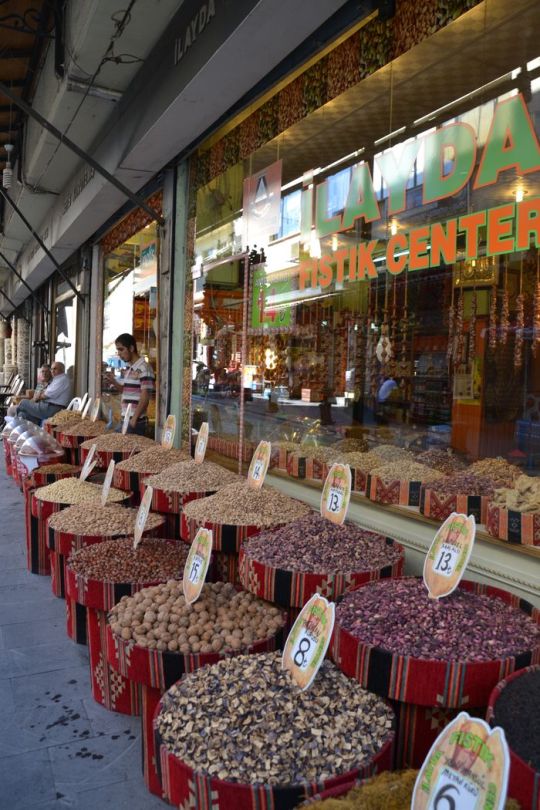
Marseilles and Rouen
It has thus increased exactly three and one half times. There is nothing abnormal in this. London in the same time has grown quite fourfold, and a similar rate of increase has been seen in Berlin, Vienna, St. Petersburg, Lyons, Marseilles, and Rouen.
The increase of many English centres of industry, and of nearly all the American, has been vastly greater and more rapid. Still, the increase of Paris, within a hundred years, of three or four times in population and five or six times in area, is a sufficiently striking fact. In 1789 there were about one thousand streets: there are now about four thousand. There were fifteen boulevards: there are now more than one hundred. The Invalidcs, the Luxembourg, the Bas-tille, the line of the inner boulevards, and the Place Venddme then marked the utmost limits of regular habitations; and thence the open country began. There were within the barriers immense spaces, gardens, and parks; but they were closed to the public. Paris which is now covered with gardens, parks, plantations, and open spaces was in 1789 singularly bare of any.
The Jardin des Plantes, the Jar din des Tuileries, were royal possessions; the Champs Elystes and the Palais Royal were favourite walks. But these were almost the only accessible promenades. Of some forty places of importance which Paris now possesses, few existed in 1789, except the Place de la Concorde, the Esplanade of the Invalides, the Cha77ip de Mars, the Place Ve7ido77ie, and the Place Royale (now des Vosges) private turkey tours. Within the circuit of the older city there was hardly a clear space, a plantation, a parterre, or a free walk, except in the Pa7′- vis de Notre Da7tie, the March des l7moce7its, and the Place de la G7’bve. From the Loire 7’c to the Hotel de Ville there lay a labyrinth of dark and tortuous lanes, such as we may still see in the Ghetto of Rome or round about the Canongate at Edinburgh.
Revolution came, the Convention
The change that has taken place is that of a dream, or a transformation in a theatre. The Revolution came, the Convention, the first Empire, the Orleans monarchy, and the third Empire — and all is new. Streets only too symmetrical, straight, and long; open spaces at the junction of all the principal streets, boulevards, avenues, gardens, fountains, have sprung by magic into the places so lately covered with labyrinthine alleys.
As we stand today in the Place dn Carrousel, in the Place de Voptra, du Theatre Franqais, du Chatelet, de la Bastille, des Innocents, St. Michel, St. Germain, Notre Dame, or de I’Hdtel de Ville, each radiant with imposing buildings, stately avenues, monuments, fountains, columns, and colonnades, with everything that modern architecture can devise of spacious, airy, and gay, it is hard indeed to understand how in so few years (and much of it within the memory of men still living) all this has been created over the ruins of the dense, dark, intricate streets of the last century, where lanes still followed the ramparts of Louis the Stout and Philip Augustus, where the remnants existed of chateaux built by mediaeval seigneurs, or during the civil wars of the fifteenth and sixteenth centuries.
The clearance has been most cruel of all ill the old City, the original Paris of the earliest ages. Down to the Revolution it had a population of about 20,000, which has now almost wholly disappeared, along with the sixteen churches, the oratories, and streets. The ancient island — Lutetia — is now occupied almost solely by six enormous public buildings; and the spot, which for eighteen centuries has been busy with the hum of a city life of intense activity and movement, is now covered only by a lonely but glorious cathedral, an enormous hospital, a huge barrack, courts, offices, and official buildings. The oldest bit of Paris, the oldest bit of city in all Northern Europe, now looks for the most part like a new quarter laid out on some vacant space. Notre Dame, the Sainte Chapelle, the Conciergerie, have been restored and furbished up till they almost might pass for modern buildings. The barrack, the hospital, the geometric streets, the open square, might do credit to Chicago.
0 notes